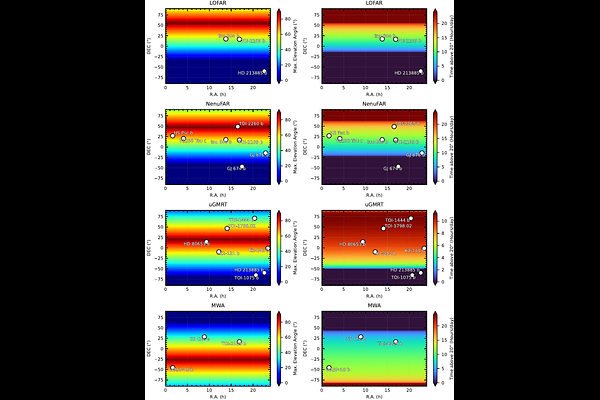Radio prospects of extrasolar aurorae polaris as a probe of planetary magnetism

Radio prospects of extrasolar aurorae polaris as a probe of planetary magnetism
Asaf Kaya, Tansu Daylan
AbstractMagnetized exoplanets are expected to emit auroral cyclotron radiation in the radio regime due to the interactions between their magnetospheres, the interplanetary magnetic field, and the stellar wind. Prospective extrasolar auroral emission detections will constrain the magnetic properties of exoplanets, allowing the assessment of the planets' habitability and their protection against atmospheric escape by photoevaporation, enhancing our understanding of exoplanet formation and demographics. We construct a numerical model to update the estimates of radio emission characteristics of the confirmed exoplanets while quantifying the uncertainties of our predictions for each system by implementing a Monte Carlo error propagation method. We identify 16 candidates that have expected emission characteristics that render them potentially detectable from current ground-based telescopes. Among these, the hot Jupiter tau Bootis b is the most favorable target with an expected flux density of $51^{+36}_{-22}$ mJy. Notably, eleven candidates are super-Earths and sub-Neptunes, for which magnetism is key to understanding the associated demographics. Together with the other predictive works in the literature regarding the characteristics and the geometry of the magnetospheric emissions, our predictions are expected to guide observational campaigns in pursuit of discovering magnetism on exoplanets.